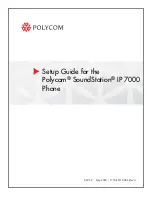
U.S. FDA
85
A56-Tuna USA am, A31008-H5320-A170-1-4A19 (18. September 2003,
©
Siem
ens AG 2001
, W:\IC
M
_MP
_CC
Q_S_
UM\03
FL004
20 US
A-Var
ia
nten A56-_C
56\Fina
l\A56_Tuna_a
m
\A5
6_FD
A.FM
How much evidence is there that hand-
held mobile phones might be harmful?
Briefly, there is not enough evidence
to know for sure, either way; howev-
er, research efforts are on-going.
The existing scientific evidence is
conflicting and many of the studies
that have been done to date have
suffered from flaws in their research
methods. Animal experiments inves-
tigating the effects of RF exposures
characteristic of mobile phones have
yielded conflicting results. A few ani-
mal studies, however, have suggest-
ed that low levels of RF could accel-
erate the development of cancer in
laboratory animals. In one study,
mice genetically altered to be predis-
posed to developing one type of can-
cer developed more than twice as
many such cancers when they were
exposed to RF energy compared to
controls. There is much uncertainty
among scientists about whether re-
sults obtained from animal studies
apply to the use of mobile phones.
First, it is uncertain how to apply the
results obtained in rats and mice to
humans. Second, many of the stud-
ies showed increased tumor devel-
opment used animals that had al-
ready been treated with cancer-
causing chemicals, and other studies
exposed the animals to the RF virtu-
ally continuously – up to 22 hours
per day.
For the past five years in the United
States, the mobile phone industry
has supported research into the safe-
ty of mobile phones. This research
has resulted in two findings in partic-
ular that merit additional study:
1. In a hospital-based, case-control
study, researchers looked for an as-
sociation between mobile phone use
and either glioma (a type of brain
cancer) or acoustic neuroma (a be-
nign tumor of the nerve sheath). No
statistically significant association
was found between mobile phone
use and acoustic neuroma. There
was also no association between
mobile phone use and gliomas when
all types of gliomas were considered
together. It should be noted that the
average length of mobile phone ex-
posure in this study was less than
three years.
When 20 types of glioma were con-
sidered separately, however, an as-
sociation was found between mobile
phone use and one rare type of glio-
ma, neuroepithelliomatous tumors.
It is possible with multiple compari-
sons of the same sample that this as-
sociation occurred by chance. More-
over, the risk did not increase with
how often the mobile phone was
used, or the length of the calls. In
fact, the risk actually decreased with
cumulative hours of mobile phone
use. Most cancer causing agents in-
crease risk with increased exposure.
An ongoing study of brain cancers by
the National Cancer Institute is ex-
pected to bear on the accuracy and
repeatability of these results.
1
Содержание A56
Страница 1: ......













































